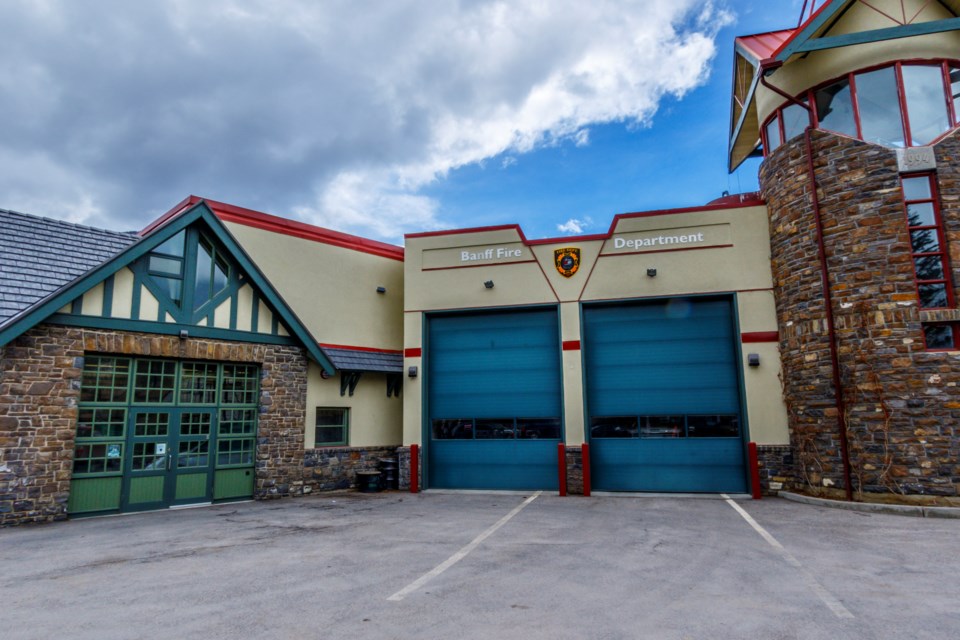BANFF – Banff National Park is under extreme fire danger.
With blistering record temperatures and no sign of rain in the foreseeable future, Parks Canada has two fire crews working extended hours and two helicopters stationed in Banff ready to bucket water on any potential fire starts.
Fire experts say other crews and helicopters in the mountain parks are on standby.
“Like most places in western Canada, we’re under this really high pressure ridge with unprecedented high temperatures, especially for this time of year in late June,” said Jane Park, fire and vegetation management specialist for Banff National Park.
“We’re in extreme fire danger pretty much everywhere in the park and so we’re in extreme preparedness level.”
A prolonged and historic heat wave in southern Alberta will persist throughout this week and into next week, with afternoon high temperatures in the mid to high 30’s, peaking near 40 degrees Celsius in some regions.
According to Environment Canada, Banff is expected to hit 37 C on Tuesday, 36 C on Wednesday, 34 C on Thursday, 30 C on Friday, 25 C on Saturday and 28 C on Sunday.
The mercury soared to 36.6 degrees Celsius on Monday (June 28) – smashing a previous record.
Based on Environment Canada’s data going back to 1995, Monday was the hottest June 28 day since 2015 when the temperature was 31.9 C. Tuesday is expected to be the hottest June 29 since 2008, expected to hit 31.1 C.
“We’re blowing temperatures out of the water,” Park said.
With little to no reprieve from the heat expected any time soon, Park said Banff’s fire hazard is compounded given the lack of rainfall compared to normal for this month, which is typically called “Monsoon June.”
Park said Banff has received only 33.9 millimetres of precipitation so far this month, compared to the average of 59.8 mm.
“We didn’t get the monsoon rains that we usually do in June, and only got about 56 per cent of the rain we normally do,” Park said.
“Conditions are dry and conducive for fires, whether they start naturally by lightning or are human-caused – and the human-caused ones are the ones we can prevent.”
Park said there have been no naturally sparked fires so far this year in Banff, but there have been several illegal fires.
She reminded residents and visitors it is illegal to have a fire in Banff National Park unless it is in a designated metal campfire receptacle.
“Basically, any rock rings are illegal within the park at all times and you need to have a permit in most campgrounds to have a fire,” she said.
“Even with permitted fires, people should make sure they completely extinguish them when they leave and they should never leave a fire unattended anywhere.”
While there is no lightning expected under these current weather conditions, Park said when these weather patterns are generated they come with what is called an upper ridge breakdown that can result in lightning.
“We will definitely be watching for those conditions as time goes by and when that starts to happen,” she said.
“But at this time, for the foreseeable future, this ridge is in place here and it’s going to stay hot and dry and it’s here for quite a while.”
As for fire bans, there are certain indices that trigger Parks Canada to implement a ban.
Banff National Park is typically in a state considered similar to that of a provincial fire advisory in Alberta – in which fires are still permitted in recreational fire pits, but open fires are banned.
Silvio Adamo, the Town of Banff’s fire chief and director of emergency management, said he is in close contact with Parks Canada, noting he had a meeting with Park on Monday morning.
“Banff is always, to some sense, under a fire ban because we do not allow fires to be done anywhere in the national park or in the community; they have to be in a contained space identified for fire,” he said.
“Having said that, Parks does have indices to look at to trigger a fire ban and we, for simplicity and so we don’t create any confusion, follow Parks Canada’s lead and we stay in communications with them.”
Park said the federal agency is monitoring the situation.
“We’re having discussions with management about whether or not a fire ban should go on,” she said.
In nearby Canmore and the Calgary forest area, which comprises most of Kananaskis Country and Municipal District of Bighorn, there is a fire advisory in effect as of June 28 due to the extreme temperatures.
The British Columbia Wildfire Service also reported a 0.2 hectare fire caused by lightning in Kootenay National Park, just east of the Kootenay River and Highway 93 near Crooks Meadows. According to the B.C. Wildfire dashboard, it was discovered June 28.
According to Environment Canada, the hottest temperature ever recorded in Canada was in the towns of Midale and Yellow Grass, Saskatchewan, on July 5, 1937, when the mercury reached 45 C.
However, the small town of Lytton in the southern interior of B.C. smashed that record with a blistering 46.6 C on Sunday (June 27). More temperature records are expected to be broken this week.
Scientists indicate Alberta’s provincial mean annual temperature has increased by 1.4 C over the past 100 years, with much of that increase occurring since the 1970s from increases in winter and spring temperatures.
The trend is projected to continue over the next 50 to 100 years. Alberta’s mean annual temperature could increase by at least 2 C by the end of the century, possibly as high as 4-6 C higher, according to projections.
In addition, climate change is also expected to bring more extreme weather events throughout Alberta, including heavy rainfalls and very dry years predicted to become much more frequent.




